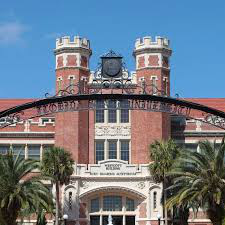Speaker
Description
Quantum Chromo Dynamics (QCD) is our current best description of interactions between quarks and gluons and it not only predicts the existence of the well understood mesons (two-quark) and baryons (three-quark) it also predicts exotic Tetra, Penta and Hexaquark states.
Experiments taking place at Thomas Jefferson Lab in Virginia, USA using the upgraded CLAS12 detector system allows a detailed investigation of exotic hadron states. In our experiment electrons accelerated to an energy of 10.6 GeV scatter off either a liquid hydrogen or liquid deuterium target. Various interesting effects can be explored in these reactions, including production of exotic hadrons, such as hybrids, pentaquarks or hexaquarks, the latter being the subject of this research.
This talk will present the analysis of data recently collected at CLAS12, which provides the first search for the ds hexaquark, a particle with quark content uuudds or uuddds with the most promising decay channels expected to be ed→e’K+ds→ e’K+Λn and ed→e’K+ds→ e’K+dK-. The results of the analysis were benchmarked utilizing more conventional reactions. First results on a ds search will be presented, through the lens of polarization of the Lambda. From theory and the analogous d* → pn reaction, we know that a peak in polarization should be seen at the mass of the ds.
Our experimental studies will be confronted with state-of-the-art theoretical calculations on ds branching ratios and partial widths. It will be demonstrated that the expected ds width is well within measuring capabilities of the CLAS12 setup, regardless of the nature of the ds dibaryon (hexaquark or molecular). It will be shown that precise knowledge of the ds mass and width constrains its internal structure.
| speaker affiliation | University of York |
|---|

